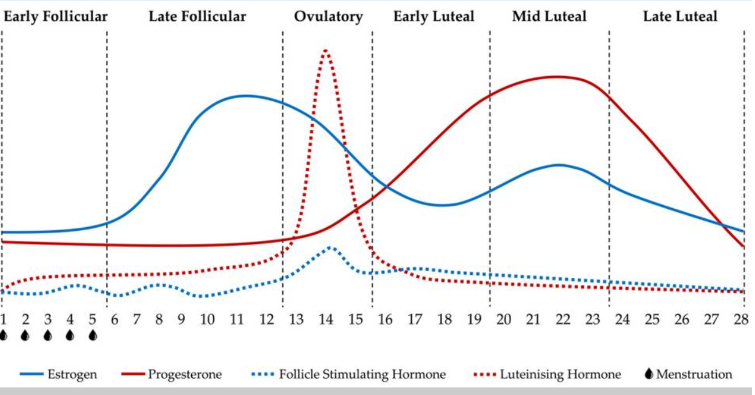
COACH’S CORNER - Tracking Your Menstrual Cycle by Lyndal Maloney
lyndal maloney discusses how we can track our menstrual cycle to get the best out of our training each month!

Are you tracking your menstrual cycle?
If so, are you doing anything with that information, or are you just using it to know when your periods are due? There is a lot of power in knowledge, and getting to know your body and its cycle can give you the power that you need to make decisions about your training for a positive outcome.
At this point in time, the research has shown that there is no real differences in performance outcomes in relation to hormonal fluctuations throughout a typical menstrual cycle. But we do know a lot about what is happening at both a physiological level when hormone levels rise and fall, as well as the changes in the female body and mind that we observe subjectively throughout the cycle.
Some days are awesome. Some days not so much. So whilst women can train ‘normally’ and not let their cycle interfere with their training and racing schedule, there’s also another way that we can approach training, and that is by using our knowledge of our cycle and how our body feels, to get the most out of every run that we do.
As you can see from figure 1 below, there’s a lot going on throughout the phases of the menstrual cycle, with the main hormones in play being oestrogen, progesterone, follicle stimulating hormone, and luteinising hormone. There are also other hormones that fluctuate throughout and have an effect on the body. If you have forgotten about what you learnt in school about the female sex hormones, then please do a quick refresher. A quick google search will give you all the info you need!

Figure 1. Hormonal phases in a 28 day menstrual cycle (From Carmichael et.al, 2021).
Training cycles are traditionally a 3 to 4 week block of increasing volume and quality, with a subsequent week of reduced volume to allow for recovery. We can take this approach with a regular 28 to 35 day menstrual cycle, but make some tweaks to suit the individual, whilst keeping in mind that the menstrual cycle affects every female athlete differently.
As a quick example of a four week block for one of my coached athletes. Designing her plan is relatively simple as she has a regular 27 to 28 day cycle.
Early follicular phase – she usually has 2 days of rest from running or strength work. She has a very heavy period and is quite fatigued (carried over from the late luteal/pre-menstrual phase). If she feels like it, she will do some gentle yoga or mobility. It doesn’t take long for her to bounce back though, and she will then get straight into harder quality sessions, depending on what phase we are in for her training schedule.
Late follicular/ovulatory – I’ll aim to schedule a hard session around this time. She knows when she ovulates, and generally feels pretty bullet proof. She also has the freedom to move this session to suit how she is feeling. Long runs will also have some quality work included at this time.
Luteal phase – she generally feels pretty good throughout this phase and we increase volume, but we have had some issues from the mid to late luteal phase with dizziness during harder sessions. She now focusses on maintaining a good electrolyte balance, and drinking more fluids (including electrolytes) on long easy runs to try to combat the reduction in blood plasma volume. During this phase, I keep the ‘long run’ shorter, and always at an easy effort. So she still hits her volume goals, but there is a bit of a reduction in intensity and the volume of the quality work. Carbohydrate intake is increased, especially for harder sessions.
Late luteal phase – to put it simply, it’s just not fun. Lethargy and low mood, leading into the first day of her period. This is her ‘recovery’ phase, with a focus on good nutrition, especially protein. Definitely no long hard runs!
As we know though, life doesn’t schedule itself around our menstrual cycle, and some days we just need to do that hard tempo session right before our periods are due, or take the kids to their sporting activities when we are pumped and ready for a hard track session. So I guess the biggest take away from the conversation about training and your menstrual cycle is that female athletes can feel empowered with knowledge. Knowing what physiological mechanisms are occurring at any given period throughout your menstrual cycle gives you more control over the why’s of doing certain sessions on certain days of the cycle, as well as a much greater understanding of why you are feeling a certain way. As an athlete, you don’t need to be at the mercy of your menstrual cycle.
Below is a ‘cheat sheet’ you can download that is a summary of some of the things that are happening throughout the menstrual cycle. You can print this out and use it to help you both understand your menstrual cycle as well as make decisions on things you can do to enhance your run.
Just click on the Download File button!
Happy running.









